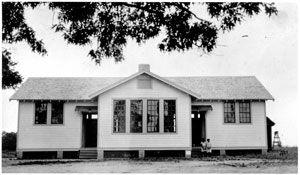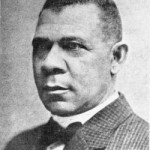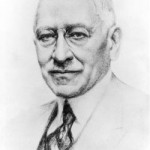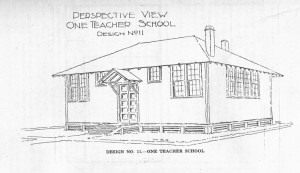While talking with my cousin about details of our family genealogy, we discussed his attending a Rosenwald school in St. Landry parish. I was somewhat familiar with these schools since a fellow researcher told me about having attended one in another southern state where she grew up, but I was still woefully ignorant of their presence and impact, having grown up in Oakland, California where the schools were open to all. The establishment of Rosenwald schools in the time after Reconstruction was very important for the south’s children of color.
As Dr. Tom Hanchett, Staff Historian, says on the History South website (http://www.historysouth.org) “…rediscovering Rosenwald Schools, [is] one of the more amazing stories in the history of American education.” Education was in a sorry state for people of color in the south after 1900 and, although the colored population hungered for an education there were very few schools that could accommodate them. As we know, “separate but equal” was separate but certainly not equal.
In 1919 black ex-slave Booker T. Washington who headed the Tuskeegee Institute partnered with Julius Rosenwald
a northern, German-Jewish immigrant’s son who had joined a young, Sears Roebuck and Company in 1897. When the U.S. Post Office instituted the rural delivery of mail for free, Rosenwald helped seize this marketing opportunity and by 1909 he was CEO of the world’s largest retailer, thanks to its mail order catalogue.
Booker T. Washington’s vision of rural schools caught Rosenwald’s imagination. Together, the idea-man and the moneyman hammered out an early example of a now-common philanthropic tool: the matching grant. If a rural black community could scrape together a contribution, and if the white school board would agree to operate the facility, Rosenwald would contribute cash – usually about 1/5 of the total project. The aim was quietly radical, a Rosenwald Fund official later wrote; “not merely a series of schoolhouses, but … a community enterprise in cooperation between citizens and officials, white and colored.”
By 1932, when the construction grants ended, 5357 new buildings stood in 883 counties throughout fifteen Southern states. Most were schools, but workshops and teachers homes also occasionally received funding. Louisiana had 435 schools.
The schools came in all sizes from little one-teacher units all the way up to seven-teacher facilities that offered full instruction from first grade through high school.
The Rosenwald Fund provided state-of-the-art architectural plans. Two black architecture professors at Tuskeegee, Robert R. Taylor, Director of the Department of Mechanical Industries,
and W.A. Hazel of the Division of Architecture, drew the first set for a 1915 pamphlet The Negro Rural School and Its Relation to the Community. In 1920 Rosenwald official, Samuel L. Smith assumed the task. His Community School Plans patternbooks were eventually distributed by the Interstate School Building Service and reached thousands of communities far beyond the South.
Dr. Washington saw each school as a community center. Rosenwald’s buildings would not only teach the young, but would help dispersed rural people come together to improve farming techniques and forge a strong community culture. Families often built homes clustered around the schools, creating settlements that persist today. Consider all of the rural Creole/African American communities in the Gulf South that have been nurtured by these schools.
The National Trust named all of the South’s Rosenwald Schools to its “Eleven Most Endangered” list for 2002, putting preservation of these schools in the national spotlight but “Out of 5300 Rosenwald schools, we still only know the fate of a few dozen. The Trust is eager to help address this preservation challenge. These buildings represent an important part of America’s heritage,” said John Hildreth of The National Trust.
In Louisiana, the first Rosenwald school was constructed in 1916. Almost 400 were built in Louisiana by 1932, and one in four rural black schools in the state was a Rosenwald.
Only a tiny percentage of the schools still stand. When Kathe Hambrick-Jackson arranged for an old school building to be moved across the Mississippi River to Donaldsonville’s River Road African American Museum, she had no idea what a treasure she had.
Years ago, all she knew was that the St. James Parish school board was going to tear down the Central Agricultural Schoolhouse, which was also known as the Romeville School. It was “the cornerstone for educating African American children in St. James Parish” from the 1930s to the 1960s, so she got the board to donate it to the museum in 1996.
It was only after the building was placed in Donaldsonville that she realized it was a rare Rosenwald school. Before the Donaldsonville building was determined to be a Rosenwald, there was only one known to still exist in the state — Plaisance in St. Landry Parish (listed on the National Register of Historic Places August 23, 2004). Although it has been noted in this author’s research that a third school has now been identified I have been unsuccessful in finding out the name or location. If any of our readers know this information, please comment on this post.
Restorations of some of these treasures can be found at http://nationalregister.sc.gov/2009landmark/nthpresenwald.pdf
*Robert Robinson Taylor (1868 – 1942), architect and educator, was the first African American graduate of the Massachusetts Institute of Technology, and the first professionally educated black architect in the United States. Between 1903 and 1932, he designed the major structures of Booker T. Washington’s Tuskegee Institute and also Carnegie-funded libraries for two other black colleges in North Carolina and Texas. Born in Wilmington, North Carolina, Taylor learned construction from his father, Henry Taylor, a former slave whose white father (and master) had permitted him to pursue an independent trade, but without emancipating him.
Sources: : historysouth.org; Southern Jewish Life, sjlmag.com, May 29, 2013; Preservation in Print, http://www.prcno.org/programs/preservationinprint/piparchives/2004%20PIP/December%202004/8.html, Dec 8, 2004; The Negro Rural School and Its Relation to the Community, books.google.com; Robert R. Taylor and Tuskegee: An African American Architect Designs for Booker T. Washington, Ellen Weiss, pg. IX
Lenora Gobert








Julius Rosenwald’sdaughter, Edith Rosenwald Stern, lived in New Orleans and continued her father’s philanthropy in the interest of black education. She and her husband were major benefactors of Dillard University. Along with the Rosenwald Fund, which funded building projects, the Anna Jeanes Fund, provided for teacher training and supervision.
They also funded musical events. When I was a student in St Mary’s Academt during the mid forties, we went to see orchestral and operatic events. I eagerly joined the Xavier U junior school of music due to this introduction. To this day music is an important part of my life.
I am a former teacher of the New Roads-Pointe Coupee Parish Rosenwald Elementary School that was later merged with New Roads High School which then renaimed Rosenwald High Elementary School serving grades K-12.
I was on the faculty from then on as a teacher for ten years, later as the School Counselor for ten years, then one of the Administrators until retirement in 1983.
I have a picture of the Rosenwald Elementary School located in Ventress and now demolished. My late sister-in-law – Josephine Martin Richard started her teaching career there and later joined the Rosenwald Elementary High School Faculty until her retirement in 1984.
Dr. Richard, thank you for your bit of history. I would urge you to contact the National Trust for Historic Preservation at preservationnation.org to provide them with a digital file of your picture of the Ventress Rosenwald school. I’m sure they would really appreciate it.
I’m working on a Rosenwald School documentary film. I would love to see the photo of the school in Ventress and know its name. Please let me hear from you.
Tom, this is great that you are doing a documentary on the Rosenwald schools. We congratulate you! In doing the research for this article all I could uncover was what I provided in the article. If anyone has information on the school in Ventress please respond to Mr. Lassiter.
I am convinced that a former school in Ellis County, Texas is a Rosenwald School. At this time, my research is in its infancy, but the building still stands. It has been slightly renovated but bears the characteristics of other Rosenwald Schools I have seen online. From my family and others in the community, I have collected more than a dozen photos of the building over the years. When I began school there in 1951, as a first grader, the bi-fold doors would be opened to form an auditorium for school/community programs. Do you know if there is a data base that lists ALL of the Rosenwald Schools…? It is NOT on the on the list of schools from the National Trust for Historic Preservation…
Hi Tom, I am not aware of a database that lists all of the Rosenwald schools. Thank you for your interest in preserving the history of your school in Ellis County and, I assume, eventually making it available to others.
The Texas Historical Commission has a report on Rosenwald Schools in Texas. (www.thc.texas.gov/rosenwald). It includes a county list and a full inventory updated June 1, 2015.
The Rosenwald.fisk.edu Database is at Fisk University
Elmerine Bell, I checked a list of Rosenwald schools in Texas and discovered there was only one listed in Ellis County. It was located in the Boyce Community. It is no longer extant.
Fisk university has the official list of the Rosenwald Schools. You can look it up and find even pictures and funding for each of them.
I just attended a dedication ceremony today in SC for Red Hill School near Camden.
There was a school in Morehouse Parish, in the village of Bonita, Louisiana. Some of the structures are barely standing today. Please see the image on the google map link below:
https://www.google.com/maps/place/15188+Lakeshore+Dr,+Bonita,+LA+71223/@32.913618,-91.6743839,208a,35y,189.17h,44.95t/data=!3m1!1e3!4m6!3m5!1s0x862e9ada220b4c8b:0x602ffb5a494986fd!8m2!3d32.926641!4d-91.6651132!16s%2Fg%2F11j7mltwmf?entry=ttu
We can’t forget Rosenwald Community Center on Broad and Erato in New Orleans. The Calliope Project community used the facilities well. In addition to sports activities, there were arts and crafts classes for everyone from children to seniors.
There is an old Rosenwald School in Algiers Louisiana, which has been a treasure to the Cut Off community. You can contact the pastor of Second Baptist Church and he will be happy to advise about the history of the school.
Thank you for this fantastic article. We just expanded the Bettina Network, inc. by adding Bettina Network Hedge Schools, inc. Hedge Schools are an old Irish invention from the time when the Brits did not allow the Irish to attend school or learn on any level. They created these schools ‘behind the hedge’ with Hedge School Masters who traveled from one place to another teaching. These Hedge School Masters looked like the homeless – which in fact they were – but they could bargain in Latin, do whatever in Greek and more. Bettina Network Hedge Schools have the student/guests traveling from place to place and the Hedge School Facilitators staying put.
Who knew there was a counterpart to these Irish Hedge Schools right in my own back yard. The incredible empowerment of history is awesome. I will be doing more research on the Rosenwald Schools. All of this I knew piece meal – I knew Mr. & Mrs. Stern, but didn’t connect her with any kind of school history. Knew a lot, but really didn’t know what I knew. Isn’t that what we all have to bridge?
Thanks you creolegen for all that you do – how would be know all of this without you. Connecting the knowledge of our youth and using it to enrich the work of our adulthood – AWESOME!
Hi Ms. Gobert, I retired from Plaisance Elementary. I had done a lot of research on Rosenwald schools when I learned about our music building. I think this site is wonderful.
My great grandfather donated land and material for the first Black school in Plaisance. His name was Felix Thierry. The school was named The Thierry School. There is an article that was printed in the Daily World newspaper in Nov. 4 1985,he was listed as Plaisance school founder. History on this need to include Felix Thierry and what he started for the Blacks children of Plaisance. Our history do not need to be Lost, like always.
Did Plaisance Elementary open after the flood in 2016? A few years ago I went to the St. Landry School Board b/c I trying to locate the school. I was thankful that a person overhead my conversation and directed me to the school. I went to Lafayette Parish to find public document on a Rosenwald School (Anderson Elem.) and no one was about to help me.
Lena, where do you live? There is a presentation on Rosenwald schools at Dillard University’s Georges Auditorium this Tuesday, Feb. 15th at 7pm. I don’t remember the presenter’s name but you should be able to ask him your questions.
Thanks, I live in Scott, LA . Thanks for the information.
Came across a map a few years ago of some of the school locations in Caddo Parish. Of the 3 locations closest to me I got permission to metal detect 2 sites located in Corn/Cotton fields. I found a few things at each site to include a heart shaped brooch, a small ring, a few old coins and marbles. I emailed someone who was with the Rosewald School Preservation board and asked if they would like to have the items and the locations where they were found. This lady chewed me up one side and down the other about how I shouldn’t be detecting on historic school property and that I could get into a lot of trouble. I tried explaining to her that these items were found in the middle of cotton fields that are plowed under every year and that the fertilizers eat away at the metals in the ground. So much for history preservation I guess.
How old is this map? Where did you find this map of Caddo Parish school locations? Does this source also have maps of Rosenwald Schools in neighboring Bossier Parish and/or other Louisiana parishes?
When Google maps first came out you could go to the Historical Imagery button and go back to the earliest image they had and the schools would be shown on the satellite image. Some listed were not Rosenwald schools but I came across a map on a Rosenwald site that I could cross reference the schools to see which ones I’d like to get permission to hunt. I can no longer get Google earth to show the schools and I guess the Rosenwald site that had the map has taken it down.
Wow ! Amazing ! All of my siblings and many other family members attended Rosenwald Elementary In South Bay, Fl. I’m now 54 and just hearing about this past history from my nephew who also attended Rosenwald. It is still a great school in South Bay, FL.
Has anyone heard of the Nels Green School in Mer Rouge, La. ? I believe it was built on land donated by the Alford family. It was a Rosenwald School.
The Nels Green School in Morehouse Parish area might have been on the Pinkston Plantation or the Alford Plantation according to the obituary of one of the teachers.
I was born in 1950, and I don’t think I have ever heard of Rosenwald schools. It is certainly an interesting topic and I will continue to do my research to learn more. This history is something I can actually relate to because I remember the Rosenwald Center when I was a child. I am sure my mother and grandmother went to a Rosenwald school. However, they did not go very far in school in those years. So very interesting. Thank you.
There is a historical Rosenwald school in Longstreet, Louisiana. It is the only one left in DeSoto Parish. It was previously used as a community center. It is owned by the DeSoto Parish Police Jurors. The building is in need of repair. Is there a foundation that would restore this historical building?
Hi! I am the director of the Tangipahoa Parish Historical Society. We have a Rosenwald school still standing though why no one has ever acknowledged it is beyond me. It was the first “Parish Training School” in Louisiana, and is listed in the Rosenwald Database curated by Fisk University in Tennessee. The database has a few photos, but the most prominent photo of the building is a “picture postcard” and several can be found in various locations including the State Library.
As most of the historic resources in Tangipahoa have been overlooked and neglected for decades, I suspect there may still be some of the other Rosenwald schools lurking in the woods. I am planning on surveying all the resources in the parish, but I will be starting with the Rosenwald schools since they are a critical resource (if any others exist) and are a fairly manageable set of data to work with. If anyone happens to know anything about any of the Tangi schools, please email: history@tangihistory.org. Thank you!
In researching some family history I discovered my father attended a Rosenwald School in the rural section of Homer Louisiana, Claiborne Parish.
I understand that the school is no long there, but much of the wood from the school was used to refurbish the Mt. Pisgah CME Church across the street. The church itself is over 100 years old and the congregation is looking into having it declared a national monument.
In researching I can’t seem to find the school listed on Tuskegee’s card file. I would love to have a photo copy of the school or just find a record of it. Is anyone familiar with Homer La. and the Mt. Pisgah community. Would love to hear from you.
Hi, I’m the historian for the Claiborne Parish Library. Wondering if you found any information on the Rosenwald School you were researching. We have none at the library but plan to start research on the Rosenwald school in the parish at a later date.
http://rosenwald.fisk.edu. This site lists all types of information about the Rosenwald schools. There are even photos of some of the schools
Here is the website to go to for more information about the school in Claiborne Parish. They have photos of the school.
http://rosenwald.fisk.edu
Hi Barbara,
I believe the name of the Rosenwald School in Homer was The Chatman School. It’s named after one of my relatives.
I would love to hear more about what you’ve discovered about your father. I’d be happy to send you a picture of the school with some of the students standing in front of it.
Mrs. Harris, I would suggest that you start with the local school board and see if it it has any records concerning the school and its faculty. Have you considered talking with some of the older members of Mt. Pisgah? The local newspaper may have a file of old clippings/stories related to the school.
I am a retired Educator and recently moved to Lake Claiborne. Barbara Harris, please contact me as I too am interested in researching the history of the Rosenwald School in Homer, La.
It is my understanding that the school was built on Hwy 2 just a few miles east of Homer. I am interested in obtaining any research sites that would provide images, history and related articles related to this important part of Claiborne Parish history. Thanks
I attended Bonita’s Rosenwald School.
There’s a Rosenwald School in Bonita, La: a small town appropriately 13 miles north of Mer Rouge, LA. I am 66 yrs old and I attended school there from 1st to 8th grade. I think the brick bldg.is still there. I haven’t been there for several years . Anyone there knows where it’s located? Bonita Rosenwald Elementary School was the name of the school in Morehouse Parish.
There was a Rosenwald School in Westwego, La.. I attended the school from 1-5 grade. Three of my brothers also attended.
Westwego is a small town across the Mississippi River from New Orleans.
I attended a Rosenwald School on Wilson Rd, Marrero, Jefferson, LA. in 1948. Marrero is located east of Westwego.
I am very interested in learning the name or names of the person who sold or donated the land for the school.
Claiborne Parish had several dozen Rosenwald schools. There is only one remaining. Call Vince Airy at the Claiborne Parish Library.
Yesterday I was going through old papers left by my grandmother and came across a copy of a document showing that my great grandmother Ellen J. Buie donated a piece of property to the Franklin Parish, Louisiana school board to be used for the Rosenwald Colored School. The date is 1926.
My parents grew up in Morehouse Parish. They attended The Green School in Mer Rouge. We were always told that my Great grandfather donated $300 for this colored school. It was said that Mr. Rosenwald’s picture hung on the wall at their school.
Funding for Rosenwald schools were usually divided between Mr. Rosenwald, the black community, and the white school board and/or white citizens. Rosenwald expected the local community to contribute to show their commitment.
Most of the schools were built in the 1920s. Most Louisiana parishes had several as black students didn’t have transportation, so it wasn’t unusual for a parish to have a dozen or more Rosenwald schools. The Louisiana Trust is trying to inventory the remaining buildings in the state. If you know of a former Rosenwald, please contact them at lthp.org/rosenwald-schools/
I attended a Rosenwald school in Marrero, Louisiana. Marrero is across the river from New Orleans. It was only Elementary.
Does anyone have pictures of the Bonita, LA school, Bonita Rosenwald. Mr. Ernest Choyce was the principal. He passed away last year. Thanks in advance.
Contact Fisk University that has the history of all Rosenwald schools. I attended Webster High School, that was Webster Training School, that was Minden Rosenwald School in Minden Louisiana. They have pictures and records of donations.